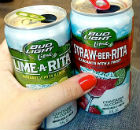Alcohol Advertisements on Public Transit FAQs
1. Is there a proven connection between underage drinking and alcohol ads?
The connection between youth exposure to alcohol ads and underage drinking is well documented. Quite simply, the more ads kids see, the more likely they are to drink, and to drink to excess. (Related PDF from Alcohol Free Children.org)
One study of alcohol ads near Chicago schools found that “exposure to outdoor alcohol advertising around schools is associated with subsequent youth intentions to use alcohol” even among sixth-grade nonusers of alcohol.
In addition, the Institute of Medicine recommends that alcohol and advertising companies should “reduce youthful exposure” to alcohol advertising and refrain from marketing practices that have “substantial underage appeal” (see our The End of the Line for Alcohol Ads on Public Transit report for sources).
2. How many cities allow alcohol advertising on public transit systems?
When we surveyed 20 US cities, we found that all but two had policies that banned alcohol ads from their transit systems. Boston and New York were the only cities that did not have such policies. Whether or not the major cities with policies enforce those policies in another question. To include:
- Bay Area Rapid Transit District
- Golden Gate Transportation District
- Santa Cruz Metropolitan Transit District
- Alameda Contra Costa Transit District
- Orange County Transportation Authority
- San Francisco Municipal Transportation Agency
- Los Angeles County, Metropolitan Transport Authority
- Chicago Transit Authority
- City & County of Honolulu Department of Transportation Services
- Tri-County Metropolitan Transportation District of Oregon
- Southeastern Pennsylvania Transportation Authority
- Washington Metropolitan Area Transportation Authority
- King County Seattle Metro Transit Division
- Metropolitan Transit Authority of Harris County Texas*
- Miami-Dade Transit
3. Why do alcohol companies focus on public transit as a medium?
Advertising on public transit can take many forms. These include, for buses, exterior, interior, wraps, stops or shelters; for trains, interior, platforms, branded cars or stations, various parts of stations; and for any property, ads on maps, tickets, fare cards, and even transfers. With advancing technology, some agencies have started to use the walls of tunnels to create “moving picture” ads.
Transit advertising is a particularly attractive medium to advertisers, as evidenced by research from New York that describes transit passengers:
Participants in focus groups in New York City have said they welcome advertising in subway cars because the advertisements help them avoid uncomfortable eye contact with other riders and provide something to look at during trips.
4. Which companies are most likely to support alcohol ads?
CBS Outdoor, a division of CBS Corp., is one of the two main outdoor advertisers for most transit agencies.
5. Aren’t advertisers covered by the first amendment?
Industry spokespeople often invoke the first amendment. But the truth is that free speech must often be balanced against government interests. Moreover, corporations are entitled to a lower level of protection for advertising (called “commercial speech”) than individuals receive for political and other types of speech. In general (with a few exceptions), government can restrict alcohol ads on its own property. This explains why so many have done so.
OUR CAMPAIGNS
 |
Stop Alcopops Our campaign seeks to ban alcopop sales entirely. |
 |
Advertising We support strong advertising regulations and enforcement. |
 |
Charge for Harm We support state and federal increases in alcohol taxes. |
 |
State Control & Regulation We support state authority to regulate alcohol sales. |
 |
Point .05 Saves Lives We support state efforts to lower the BAC limit to .05. |
Help us hold Big Alcohol accountable for the harm its products cause.
| GET ACTION ALERTS AND eNEWS |
STAY CONNECTED    |
CONTACT US 24 Belvedere St. San Rafael, CA 94901 415-456-5692 |
SUPPORT US Terms of Service & Privacy Policy |


